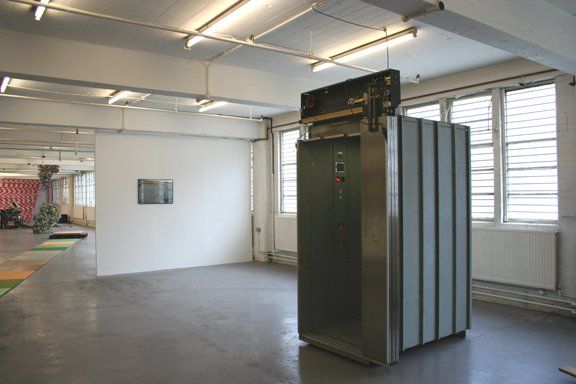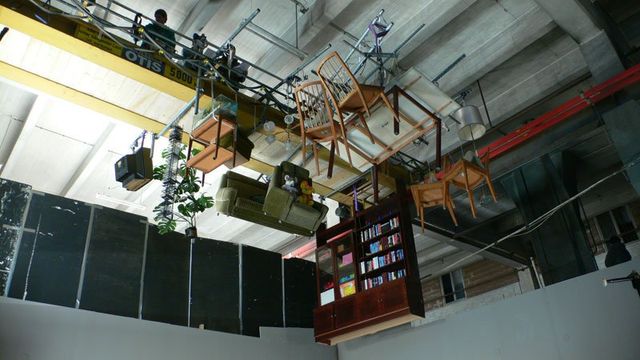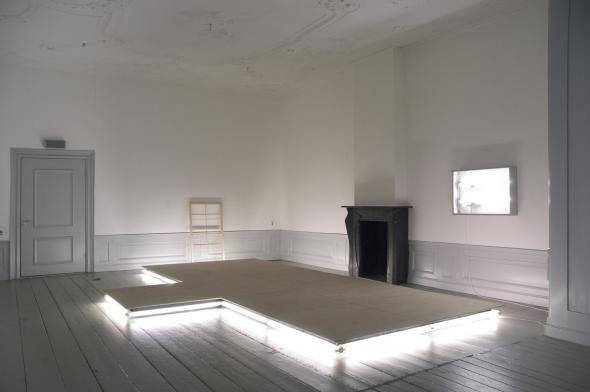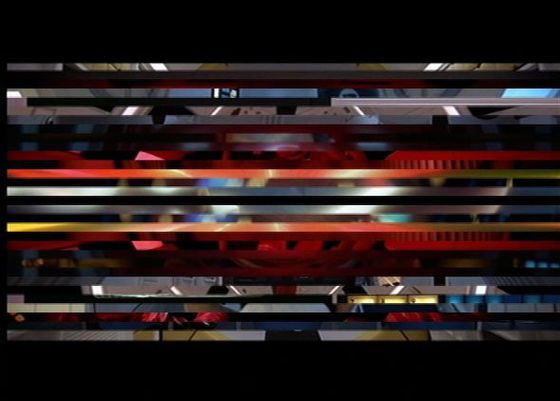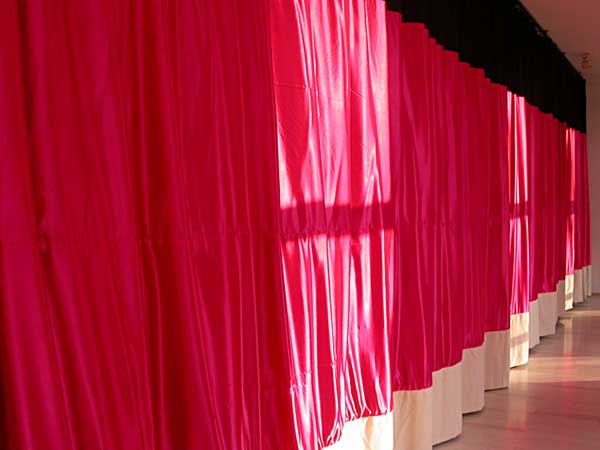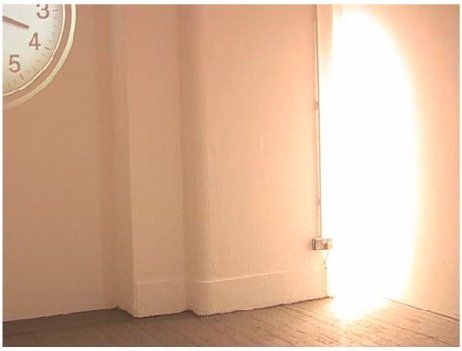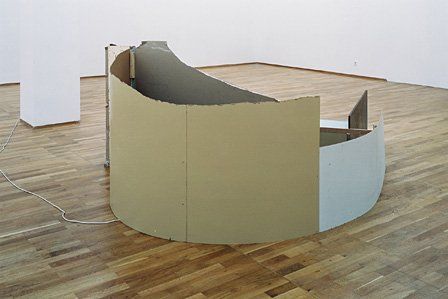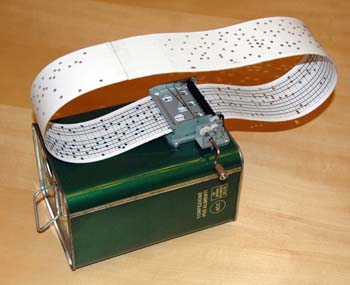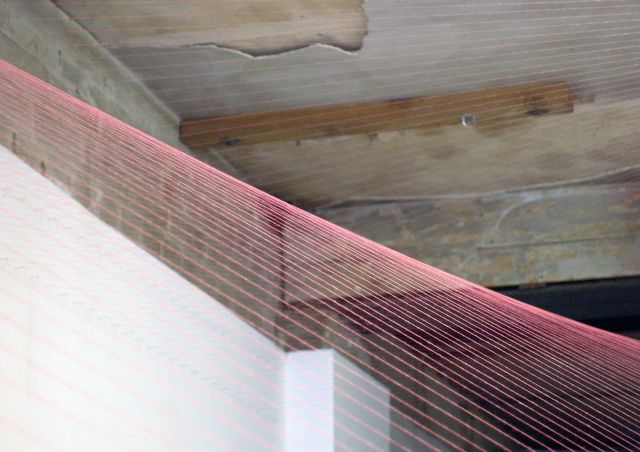PAUL CARTER - HARALD HUND & PAUL HORN - SIMON KENTGENS
SHEENA MACRAE - ERWAN MAHAO - KATE MccGWIRE - MARGARET O'BRIEN
FELIX SCHRAMM - CHRISTOPHE TERLINDEN - KATE TERRY
co-curated by Richard Ducker and Frederik Vergearts
private view: Friday, 21 November 2008
exhibition continues: 22 November - 21 December 2008
Although the distance between the United Kingdom and continental Europe is less then 60 miles (+/-100 km), the English Channel has been a geological frontier for ages. The channel has been the key natural defence for Britain, but has also served in more peaceful times as a link joining shared cultures and political structures. It separates England from northern France, it’s a productive site for maritime archaeologists and it has thousands of shipwrecks.
A very nice way of crossing the Channel is taking the ferry. In contrast to taking the plane or train, as a traveller you get a totally different experience by entering your final destination in a car or van. As we have often taken the ferry to transport artwork between London and Breda, we know the route by heart and while resting on deck and enjoining the view there’s this warning always that reminds us of the fact that the furniture on deck may be affected by
SOOT FROM THE FUNNEL
It can settle everywhere and we take it back to where we came from. It can stain clothing and can possibly cause illness if inhaled. Breathing common urban air pollution (containing soot) is much deadlier than previously thought. A primary collaboration-project between Fieldgate Gallery, London and Lokaal 01_Breda.
Hosted by
Lokaal 01 Breda.
Kloosterlaan 138
4811EE Breda, Nederland
T: +31 (0)76 5141928
F: +31 (0)76 5207124
E: breda@lokaal01.org
geopend: do t/m zo van 13 tot 17 uur
PAUL CARTER
Imp’: Replace word ‘models’ with ‘Constructions’ Fiction and metaphor, Limits of possibilities of expansion and contraction in architecture and its use. Limits of in figure in architecture Limits of objects in architecture Possible spaces Metaphoric spaces Proposal is to build a construction Practice involves expanding and contracting, constructing and sculpting within models and actual architecture. Imaginary impossibilities Limits of metaphor, possibilities of movement Activities of this place Fiction of blowing the walls apart Expansion , contraction and friction Model constructions incorporating lift and lift shaft placed next to life size lift with opening and closing doors. Movement, inertia Lift potential of movement within architecture to other levels but in this instance not immediately accessible. Models suggesting imaginary possibilities shaft deposits ‘Window Seat’ window work seat bed, window work seat bed placed in lift House clearance Relocation Interests lie with the potential of immersion within constructed spaces
SHEENA MACRAE
Odyssey 7'00" 2006
In a recent installation at the MAC/VAL Musée d'Art Contemporain Val-de-Marne in France, Sheena Macrae's single channel video was reflected into three giant mirrors. This installation created an infinity chamber of lines, endless stripes extending into the reflected echoing image, playing with the film’s original desires of sci-fi pseudo speculations of infinity and eternity. “The quality of the epic always resides in a single breathless moment. As if the universe were anchored by sync points, where for just one video frame, one thirtieth of a second, all of its truths are revealed in fragmented, incomprehensively overwhelming glory. It’s an indefinable sentiment, expansive beyond language, residing in the intangible realms of the metaphysical. A place not unlike your tv screen. Perhaps Sheena Macrae is a diviner; her ability to extricate the essence from the epic is uncanny…Like a drug or a diamond, a screen-size cosmos for the taking. Ergonomic, perfect, and larger than life.” -- © Patricia Ellis, excerpt from Flatpack TV, 2005
KATE MccGWIRE
Kate MccGwire’s work exists in a twilight zone where beauty butts up against ugliness, rapture meets disgust and reason superstition. She will take an everyday material or object – a chicken wishbone, pigeon feather or book – and, by re-framing it, generate ‘a field of attraction’ around it. The viewer is left reeling, simultaneously seduced and alienated, relishing the spectacle but at the same time aware of something disquieting, something ‘other’. Her instinctively aesthetic approach – pared-down, spare and sensual – ultimately proves treacherous; the bone invokes the chill of death and stench of the killing fields, the feathers a gag-like response at their parasitic growth, while the inverted flower scarring the book’s pages denies all possibility of human progress through knowledge. The shift from a world in which objects sit in their ‘natural’ place allows us a new perspective, exposing us to the macabre truths that lurk behind the familiar and the nightmarish reality of what it is to be human – a brutal consciousness of the ugly and the funereal, of fear and disgust.
MARGARET O'BRIEN
Margaret O’Brien’s practice refers to a psychological in-between space, one that exists between the private and public personas, and the self and others. This is an intangible, insecure space, fragile and changeable in the extreme. It alludes to psychological conditions such as obsessive behavioural patterns, paranoia, a compulsion to control, isolation, alienation, agoraphobia, claustrophobia etc. O’Brien draws her inspiration from the everyday, the familiar and the domestic environment. In recreating objects or spaces that we encounter on a daily basis, she replaces their normally functional or benign fundamentals with an element of malfunction or mishap. O’Brien’s practice is multidisciplinary and location is fundamental to her concerns. She uses installation as a material through which the emotive experience of a space is manipulated to create a disorientating psychological environment. The spaces she interferes with become highly sensory experiences. Using devices such as sporadic sound, live malfunction, scale, and the multiple, the psyche of the viewer is affected through an involuntary, sensory response to the work.
KATE TERRY
With coloured thread, tautly pulled across the expanse of the gallery, Kate Terry creates a subtle yet large presence: a whole form articulated through the most minimal means. This is her challenge. In her studio she makes a model; she draws; she imagines. In the gallery, Terry starts by hammering pins into the gallery walls. Here, her search for perfection begins. She is adamant that the pins are absolutely evenly spaced and treated identically. She ties a thread to each pin on one wall and stretches it towards its across, above and beneath each other… Meticulously, delicately and with great restraint designated pin on the other side. She ties the end. The threads travel individually across, above and beneath each other… Meticulously, delicately and with great restraint she skillfully alters gallery spaces and the way viewers experience them. Yet the completed work is, at first, almost invisible. She works hard to create an installation that reveals itself slowly – transforming imperceptibility into spectacle

